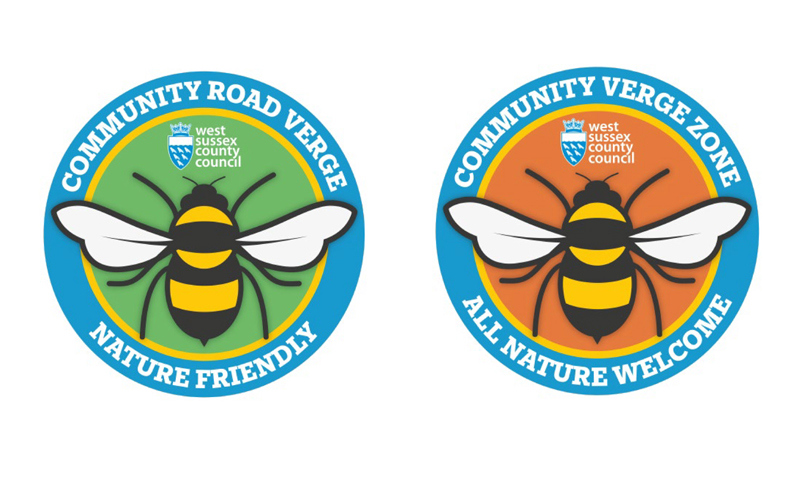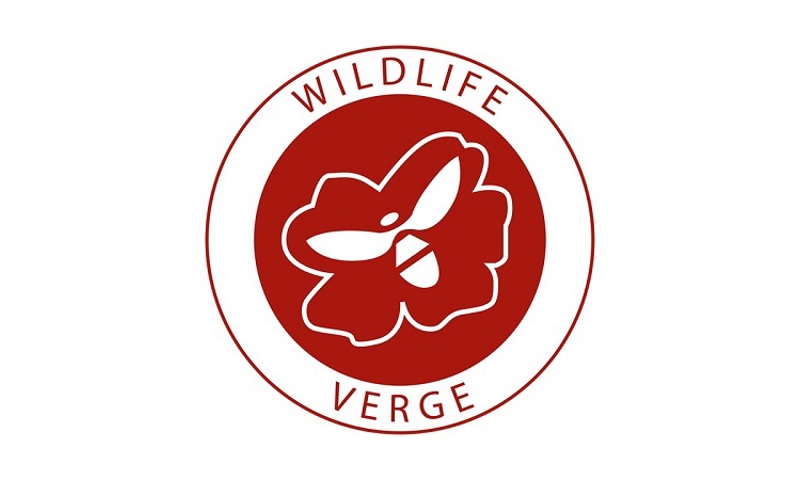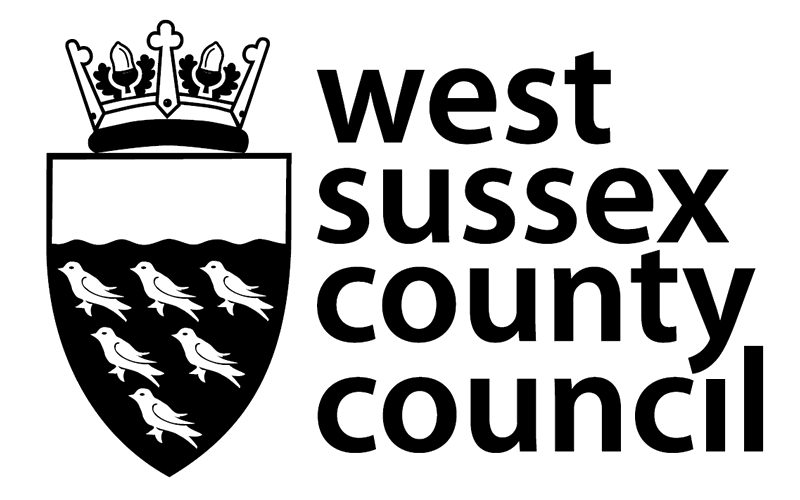1 Community Road Verges
Community Road Verges (CRVs) are a new classification for roadside verges in urban areas. They have been identified by local communities interested in attracting pollinators.
In most cases, the local community also oversees the verge and monitors it for improvements in biodiversity and wildflowers.
There are currently 58 Community Road Verges in 18 locations across the county.
Each CRV will have a sign like this nearby, usually on a lamppost:

By making some verges wilder, we are helping to increase the biodiversity of West Sussex. This will mean that our local environment works better for all of us. CRVs also help to deliver some of the actions in the council’s Pollinator Action Plan.
We look after CRVs in a different way. Rather than five cuts per year, the CRVs receive one in the autumn. After the grass cut, the local community rakes and disposes of the grass cuttings.
The objective is to lower the fertility of the soil, enabling wildflowers that often already have seeds in the depths of the soil, to out-compete the grass. After a few years, the wildflowers should look more abundant.
Fewer cuts will also give the native species the chance to grow. For a while the verges may look a little straggly, but this is a long-term project and they will improve. With the help of the local community we will be monitoring their progress. Weeds aren’t sprayed in and around CRVs.
We've changed the process for creating new CRVs. There's no formal application; if you are interested in discussing a new nature-friendly verge project in your community, or if you have an existing CRV project that you'd like to expand, please contact us.
Please email active.communities@westsussex.gov.uk.
If you think there is a problem with a roadside verge, you can tell us by reporting a grass safety issue.
2 Notable Road Verges
Notable Road Verges (NRVs) are managed to help wildlife. They are maintained differently to other verges. They are cut only once per year and some are monitored for improvements in biodiversity. Verges are awarded NRV status where there are protected species of plants or insects present.
NRVs have been in existence for over 40 years, leaving wilder habitats for native plants that are rare or of special interest in the UK.
Wooden posts with the logo below attached signify an NRV is nearby.

Be aware that most of our NRVs are in locations that are not safe to park or visit without taking suitable precautions.
Let us know if you see any flora or fauna that are on the protected species list on verges around the county that are not currently NRVs as we might be able to have them designated. Email details to us at active.communities@westsussex.gov.uk.
If you notice any safety issues regarding NRVs, report a grass safety issue.
3 Pollinator highways
A wildflower verge here and there isn’t as helpful as it could be for our travelling pollinators. That’s why we are also looking at ways of linking Community Road Verges (CRVs) to the many projects in West Sussex and across the South Downs that are helping to create wildlife corridors.
We are also working with local partners to establish pollinator highways - linked habitats joining up different areas. One of the first has been
Project partners
- Lancing Parish Council - set up along the A2025 through the centre of the village, from the sea to the A27.
- Manhood Wildlife and Heritage Group/Selsey Town Council - two locations and a third being developed, eventually making its way across the Manhood Peninsula and towards Chichester.
New pollinator highways are being established this year along Loose Lane in Sompting by Sompting Parish Council and along the A259 (Seafront) in Worthing, westwards from Brooklands Park.
4 Nature verge network
We run a quarterly online networking meeting for all communities involved with Community Road Verges or pollinator highways. The idea is to share ideas and experiences.
Each meeting has a speaker providing an insight into the wilding process, or some informal training, followed by a discussion.
To find out more about the nature verge network, please email: active.communities@westsussex.gov.uk.
5 Downland pollinator highway
West Sussex County Council (WSCC) Highways and South Downs National Park Authority (SDNPA) are working with parish councils within the national park on a project aimed at increasing biodiversity. The project will create linked rural habitats, known as nature corridors. In West Sussex, we call them pollinator highways and this project will create the ‘Downland pollinator highway’.
The Downland pollinator highway will span 11 parishes, with long stretches of potentially wildflower rich rural road verges being mowed using our new cut-and collect-mower.
The cut-and-collect process will take nutrient rich grass cuttings away from the verges and will, over the three-year span of the project, lower the fertility of soil giving native wildflowers a chance.
Each road verge is currently also a notable road verge, as these verges already have an existing level of biodiversity as a starting point for monitoring.
Why we are doing it
Road verges have poor habitat value due to current verge maintenance regimes. Cut-and-collect methods of verge maintenance have been shown, via projects in Dorset and Lincolnshire, to improve biodiversity in roadside verges. This can provide better wildlife links and improved visual amenity over quick growing grasses and weeds, such as nettles and brambles.
Biodiversity improvements will be monitored by a consultant ecologist, managed by SDNPA. The outcome of the project will inform WSCC's cutting regime in the future.
Midhurst and Hurstpierpoint
To see if a similar approach works in urban locations, we are running trials in two urban locations - Midhurst and Hurstpierpoint - using the cut-and-collect machine:
- In Midhurst, as part of the Downland pollinator highway, we’ll cut the town’s grass five times a year.
- In Hurstpierpoint, inspired by both the pollinator highway project and being part of our Community road verge programme, we’ll cut the grass three times a year. This will allow verges to grow slightly longer between cuts.
The results of these two trials, and the whole Downland pollinator highway project, will inform the way verges are managed for the benefit of nature across the county.
Find details of other pollinator highway projects in the county.

